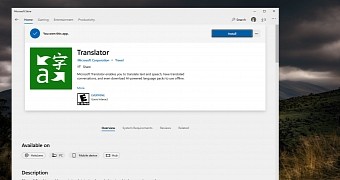Microsoft has recently announced the addition of 9 new languages to its translator service, thus bringing the total count to no less than 83 languages.
Microsoft’s translation engine powers not only the dedicated app created for mobile devices and Windows, but also other services in Microsoft products, including in Office.
“These languages are available now in the Microsoft Translator apps, Office, and Translator for Bing to translate text to or from any of the 83 languages. To add text translation to your own applications, websites, tools, or any solution requiring multi-language support you can use Translator, an Azure Cognitive Service. You can also use Azure Cognitive Services Speech to get speech-to-text translations into these nine languages,” Microsoft explains.
The language that’ve been added this week are the following: Albanian, Amharic, Armenian, Azerbaijani, Khmer, Lao, Myanmar, Nepali, and Tigrinya.
“With the addition of these nine new languages, Microsoft Translator text translation is now available in 83 different languages, with additional dialects being available in languages like French and Portuguese and multiple writing systems being available in languages like Chinese and Serbian,” the Redmond-based software giant adds.
The Microsoft Translator growth
Microsoft Translator is certainly evolving, and the addition of these new languages is the living proof more people use it on a regular basis.
The Redmond-based tech giant says all these 9 languages that it added to the service as part of this latest update are being used by more than 170 million people, so it’s pretty clear the Translator engine now has a big opportunity to grow even bigger.
Microsoft Translator is available not only for consumers, who want to translate real-time conversations or documents, but also at work for businesses and in the classroom as part of the education software offering powered by Microsoft and providing live captioning and cross-language understanding.

 14 DAY TRIAL //
14 DAY TRIAL //